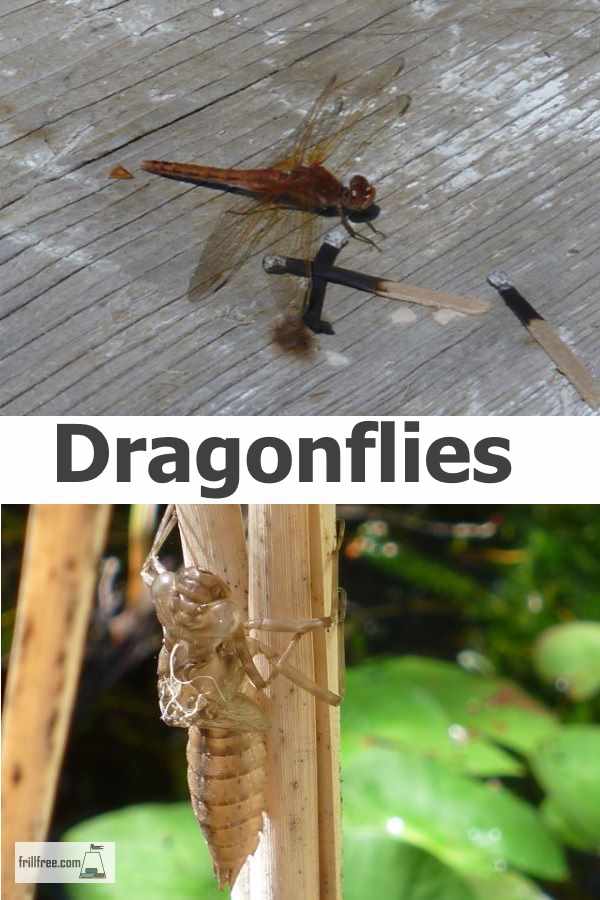- Homesteading
- Garden Bugs
- Dragonflies
Dragonflies
Prehistoric Predator Insects
In prehistoric times, apparently these insects had 10 foot wingspans.
That's pretty scary, especially when you see them taking insects on the
wing. They are voracious hunters, eating all kinds of pests, and the
larvae eat many mosquito larvae.
When I first saw the larvae of
dragonflies, I had no idea what it was; I remember clearly watching this
black bug thing climbing up a reed in the water, then stopping for a
while. I was only vaguely interested, until I saw the back of it split
open, and a dragonfly emerge with crinkled up wings.
The cast
off skin clung to the reed, and the dragonfly plumped up its wings in
the sun, until they were fully expanded. After a few minutes, off it
flew - a total of about five minutes after clambering out of its aquatic
home.
To say the least, I was shocked, surprised and delighted to have witnessed this.
In my pond, they live for one to three years in the
larval form. If I drag the filter for the pump out, I make sure I give
them enough time to scurry back into the water because they will live
only a few seconds in the air.
I also use mosquito granules with care, after seeing a hatched dragonfly with deformed wings trying to fly. A small amount seems to be fine, but anything over that will cause damage in the larvae phase.
The adult females hang around a
pool of water, a river or a pond; their typical flight pattern is in
squares or triangles. The males will be close by, patrolling back and
forth, sometimes hovering in place for a moment.
When these
both get together, their mating is astonishing; it takes place in
flight, with the two intricately attached to each other. The female sex organs are at the back of the head, so as you may imagine, it's quite gymnastic!
Afterwards, the females will lower their long body to the surface of the water from a log, reed or the side of the pond to lay their eggs, and then they go off to die.
The life cycle of these insects is fascinating.















